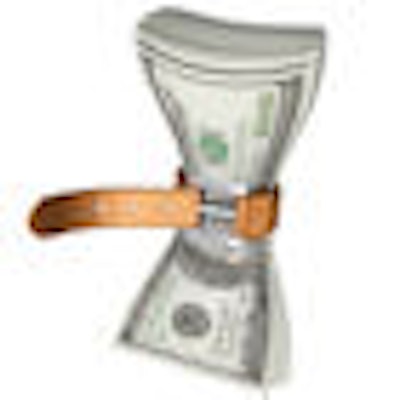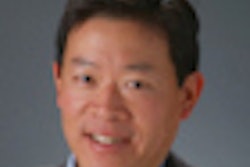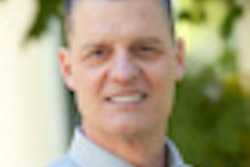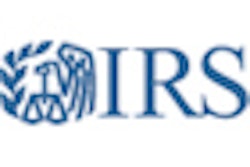
The expiration of favorable tax provisions compounded by increases in federal income taxes mean that some U.S. dentists could face tax rates of nearly 50% in 2013. To avoid this "taxmageddon," dentists should consider buying costly equipment before year's end and consult accountants versed in deductions unique to dentistry.
There has been much debate about the looming "fiscal cliff" that will occur if tax cuts adopted during the Bush administration are allowed to expire at the end of this year. Exacerbating the tax situation are many deductions that are set to change that could greatly affect a dental business' bottom line.
 Brian Hufford, CPA, CFP, specializes in financial planning for dentists.
Brian Hufford, CPA, CFP, specializes in financial planning for dentists.
For example, many dentists could face compounding effects in tax rate increases for 2013. Dividend income has been limited to a top federal tax rate of only 15%, but with no changes in expiring provisions, dividends will be taxed in 2013 at a top federal rate of 43.4%, according to Brian Hufford, CPA, CFP, who specializes in financial planning for dentists.
This results from a combination of an increase in top income tax brackets from 35% to 39.6%, plus an additional health insurance tax of 3.8% that applies to investment income, Hufford added. Another factor is the anticipated end of the favorable tax treatment of dividends, he noted.
For dentists in California, where the income tax rate is 9.3% for incomes more than $93,532 and the sales tax is 8.25% (some cities add local taxes, which can raise the tax to 10.75%), the changes could push their total tax past 50%, Hufford noted.
So it behooves dentists to consider taking several steps before the year's end to offset the coming changes to the tax code. While the U.S. Congress may act before year's end to avoid some of the tax increases and changes to allowable expensing and depreciation, the outcome is still uncertain at this point.
"It depends a lot on the election and what tax policy goes forward. Since a big part of the economy is purchasing new equipment because of the tax benefits, it's hard to imagine anybody allowing that to go away because it would hurt the economy so badly. But no one knows," Hufford told DrBicuspid.com. "These large deductions that dentists have been able to use, particularly related to equipment, most of them were temporary to begin with and are unrelated to the Bush tax cuts."
Tax deduction changes
Because dentistry is a capital-intensive business, dentists have enjoyed very favorable tax depreciation rules, Hufford noted.
For example, years ago dentists could only expense up to $25,000 for qualifying equipment. But this deduction was dramatically increased in recent years and currently amounts to $139,000 in 2012, according to Hufford. In addition, a recent alternate provision allows a bonus depreciation of up to 50% of the cost of eligible property.
“If a dentist has $350,000 income, he'll face a horrendous tax increase.”
However, in 2013, expensing decreases back to $25,000 and the bonus depreciation disappears, Hufford explained.
"The drop to $25,000 will hurt dentists in a big way," he said. The changes will greatly decrease the tax benefits of purchasing large amounts of equipment or, in the case of bonus depreciation, building out a dental office space, he added.
For example, if you are planning on buying a Cerec scanner or CT scanner within the next 12 months and a manufacturer is currently offering a discount if you buy before December 31 of this year, you might consider a 2012 purchase because you can expense $139,000 for 2012 and it is unclear whether expensing will drop to $25,000 in future years, Hufford said.
"You kind of have to do some number gymnastics to see if it's worth it," he explained.
"Even though a dentist may be in a higher tax bracket next year, it may be more favorable to purchase equipment this year to benefit from larger deductions."
Provisions such as increasing allowable expenses and deductions were approved to address the recent dire economic straits. But these may be phased in or out based on the strength of the economy, he said.
Other changes in deductions scheduled to expire would also greatly affect most dentists, according to Hufford. These include the reinstating of the marriage penalty and the loss of significant benefits from itemized deductions with higher adjusted gross incomes.
Managing tax brackets
If the existing provisions are allowed to expire at year's end, effective tax planning will revolve around managing tax brackets, Hufford emphasized. One of the taxes set to take effect in January 2013 is the new 3.8% health insurance tax on investment income (including net rental income) for those with incomes more than $250,000.
According to Hufford, dentists have two important tools for managing income tax brackets: family income splitting and qualified retirement plans.
It may be more important than ever to include a spouse on the payroll for additional 401(k) plan contributions, as well as paying significant salaries to children to reduce the overall income tax brackets of the parents, he advised.
If dentists are in the 39.6% tax bracket and their children are in the 15% bracket, it behooves them to hire their children to benefit from family income splitting.
"If a dentist has $350,000 income, he'll face a horrendous tax increase because of all the other provisions in the law," Hufford said. "So the ability to pay family members or pay a spouse for a 401(k) deduction or use large pension deductions to get yourself below the $250,000 key level could be critical."
For instance, if a dentist makes $300,000 a year and the dentist and spouse can put $65,000 into a 401(k) plan, they may save more than 50% of the taxes on the $65,000 if scheduled provisions are implemented in 2013, he explained.
Cost segregation studies, which determine how much of a dentist's building is related to treating patients, can also be useful to claim large depreciation deductions, Hufford noted. Building costs that are related to operatory design and specialized surfaces, plumbing, and electrical that are unique to dentistry can qualify, he said. Dentists can typically depreciate 25% to 40% of the building costs over five or seven years instead of 39 years, following the outcome of a court case filed by hospitals over the issue.
For example, if a dentist has a special outlet for an oral camera, both the outlet's cost and the construction management costs for the building qualify for the depreciation, Hufford noted.
If a dentist owns a building that cost $1 million and he commissions a cost-segregation study that identifies $300,000 of that cost is related to treating patients, he can depreciate that amount very rapidly compared with the normal 39-year life required for commercial buildings, he added.
"It's always a good deal, but it's a function of the cost of the study versus the tax benefit," said Hufford, noting that most such studies cost less than $10,000. "Our rule of thumb is if the building costs over $300,000, it's worth thinking about."
Other changes and deductions
Changes in the pension law made under President George W. Bush also were very favorable to dentistry, Hufford said, especially for older dentists.
"Let's say a dentist is 50 years old and the average age of their staff is 35," Hufford explained. "The staff has much longer to fund their pension benefit than a 50-year-old doctor. So the pension law allows us to, in effect, age-weight the benefit so the doctor can make a very large contribution, proportionate to age. It's just age-appropriate, in effect."
In a defined benefit pension plan, the maximum benefit is more than $1 million. Since defined benefit plans fund a specific benefit at a specific age, the older a doctor is, the greater the annual amount that may be saved. This is very different than a 401(k) plan, for instance, where the annual amount that may be saved is limited, he added.
The law allows dentists and small business owners, in effect, to have two pension plans: 401(k) plans and defined benefit plans at the same time.
"Many of our clients deduct an excess of $150,000 per year because they're in their 50s and they need to catch up on retirement savings," Hufford said.
Unfortunately, many dentists aren't aware of these deductions, he noted.
"The problem is most dentists work with advisors who are unable to design and administer defined benefit plans since it requires the use of an actuary," Hufford said.
If the dentist is in the 40% federal and state tax bracket and contributes $150,000 to a paired-plan arrangement, the outcome is like a very large "matching" program, in which the dentist pays $90,000 and the Internal Revenue Service matches with $60,000 through tax savings, according to Hufford.
"Tax savings are important, but in the end it is all about the dentist having a plan to pursue a successful retirement," he said.



















